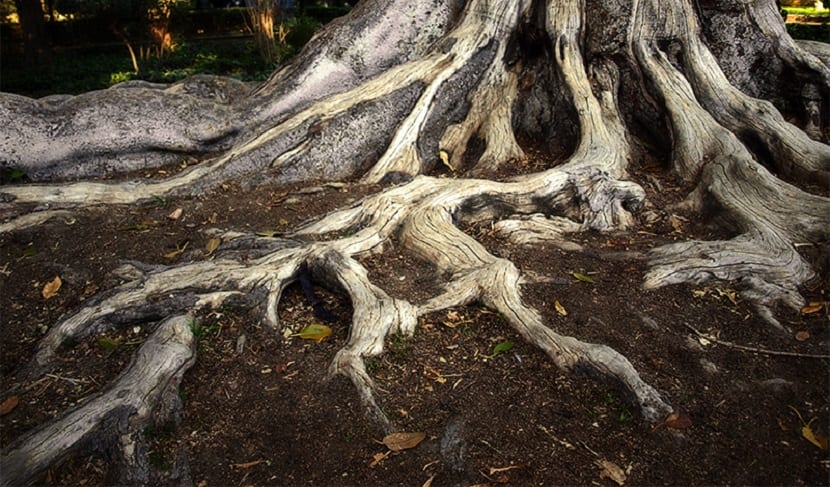
For gardening, agriculture or in general something that has to do with plants, it is necessary to know the parts of it, the functions and how to optimize the irrigation and the conditions of the plant so that it can be in optimal conditions.
Today I come to talk about the different parts that make up the root of a plant. Knowing which are the parts of the root can help us when sowing plants, watering them, maintaining them, knowing the type of soil that is best for them, etc. Do you want to know more about the parts of the root?
Root characteristics

Before knowing the different parts that make up the roots, it would be good if we knew the functions and characteristics that these perform during the life of the plant. The first thing is to know the characteristics of the roots.
Well, the root is born from the radicle of the embryo and lacks stems, leaves or branches. The length and color of the roots are variable and depend on the type of plant. The root is the organ that the plant has that makes its support possible and is necessary if it wants to absorb mineral salts and water from the soil and transport them to the rest of the plant. It serves as a reserve organ to accumulate substances and nutrients that will later be assimilated.
Most of the roots are underground and acquire nutrients from the soil. But there are also aquatic and even aerial roots. Many of the roots are useful and serve as food, such as beets, carrots, and cassava; others serve as medicine, such as ginger; and others are used in industry, such as turmeric.
Root function

The roots fulfill different functions in the plant depending on the type. However, these are the most common functions:
- It fulfills the function of absorption. This is the best known function and it is about absorbing the water and the mineral substances that are dissolved in it through the absorbent hairs available.
- Another function is to fix the plant to the ground to keep them attached and in good condition. This is not true when it comes to aerial roots or the roots of floating aquatic plants.
- They fulfill a driving function. That is, the root is the one that leads the absorbed water to the rest of the plant for its feeding and proper functioning. In addition, it also conducts the minerals it gets from the soil.
- Works like food reserve organ. Not only is it capable of absorbing nutrients from the soil and conducting it throughout the plant, but it is also capable of reserving food substances for when the plant needs nutrients and the environment is short of it.
Root parts

Once we have seen the characteristics and the function that the root fulfills, we will see what parts they have:
- Neck: The roots have the neck that is located at the level of the soil surface and is the one that communicates the root with the stem.
- Branching area: In this area that is found in the neck and the hairy area (area where the absorbent hairs are found) is where the roots branch out and form other secondary roots to increase the area of absorption of nutrients, water and minerals.
- Hairy area: In this area are the hairs responsible for the absorption of minerals, water and nutrients. It has a conical shape, with the lower hairs shorter than the upper ones.
- Cell division zone: It is the area that is included between the piliferous zone and the cap. It is in this area where root growth takes place.
- Coping: It is the rigid cap that protects the tip of the root when it enters the interior of the earth.
With this information you can know which parts the roots have and their function for plants.
very good it helped me too much until I answered some questions that they gave me to answer thank you very much
We are glad to hear it, Josefina. Greetings.